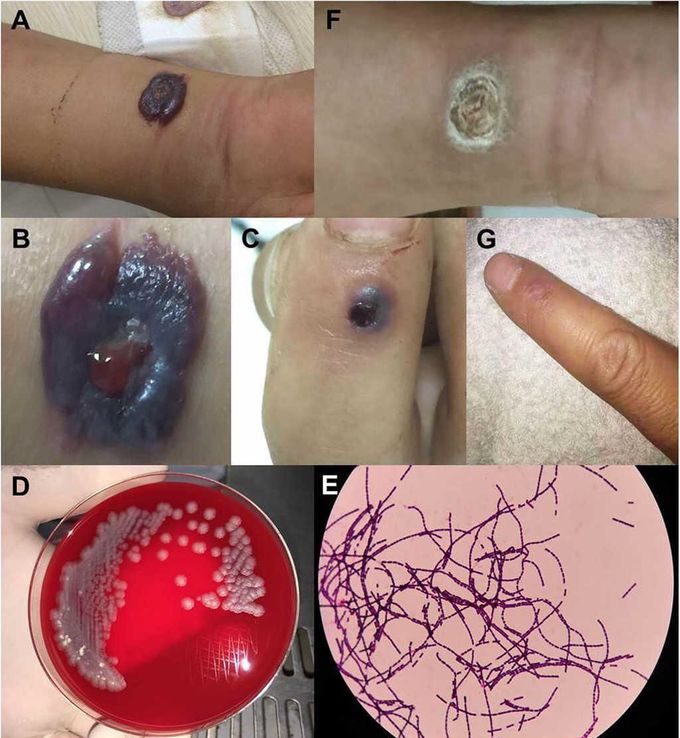


Anthrax
Caused by spore forming gram positive bacterium, Bacillus anthracis. Infection is an occupational hazard for farmers and those who handle animal wool, hair or meal products. B anthracis can cause cutaneous (most common), inhalation (most deadly), or GI anthrax. There is no person to person spread. History: - Cutaneous: presents 1-7 days after skin exposure or penetration of spores. Lesion begins as pruritic papule enlarges to form satellite bulbous ulcer with an edematous halo and raised edge. Regional lymphadenopathy is characteristic. The lesion evolves into 'black eschar' with 10 days. - Inhalational: presents with symptoms of pneumonia, classically caused by hemorrhagic mediastinitis. Patients typically do not have infiltrates. - GI: after ingesting poorly cooked contaminated meat; can present with dysphagia, n/v, bloody diarrhoea or pain. Diagnosis: Criteria for diagnosis include culture isolation or two non culture supportive test (PCR, immunohistochemical staining or ELISA). CXR is most sensitive for inhalational disease. Treatment: * Ciproflofloxacin or doxycycline for at least 14 days for inhalational or cutaneous disease of face, head or neck. * After cutaneous disease, post exposure prophylaxis to prevent inhalational anthrax should be continued for 60 days.

